Written by Michael Auliso and republished here with his permission.
Missing some images on page 1 and all images on page 2 and page 3 is missing completely
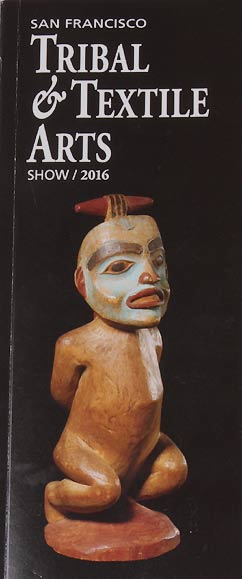
Show Catalog
This year Caskey Lees changed the opening night formula. The de Young (Fine Arts Museums of San Francisco) no longer hosts it, meaning the $150 donation fee disappeared. The entry fee was lowered to $60, and was free altogether, if you had the email coupon. That’s more like it, and in fact, it changed everything. Dropping the formal black tie white glove exclusionary museum donor model, for a more festive one, was long overdue and increased attendance proved it.
The entrance foyer was bustling with energetic visitors, live music and Belly Dancers. The parking lot was overcrowded and so were the lines for the bars. The food from the buffet was snatched up so quickly, that by the time I got there the tables where all but empty. Ironically that may have been better for the dealers, as opposed to having customers who never leave the food court. In previous years the majority of open night visitors glued themselves around the food until they felt they had consumed roughly $150 worth of shrimp or whatever (no kidding). Gone is the opulent food presentation on opening night that often overshadowed the art.
An added feature to this year’s venue was a lecture series sponsored by FEA (Friends of Ethnic Art) at the Firehouse on Sunday. It was organized by Dave DeRoche; speakers included Sam Singer, Michael Hamson, Christina Hellmich and Mark Blackburn to name a few. I understand it was video taped, hopefully FEA will post a link on their site? Also happening concurrently with this show was the American Indian Art show in its 32 year. Also known as “The Marin Show” about a 35 minute drive north.
They were probably planning on the same number of opening night visitors but there were far more; at least double the volume it seemed. Knowing this next year, they’ll presumably have more food and drink to accommodate the expanding crowds. Self-serve beer and wine might be an efficient idea for flash crowds like they had. None of us want to spend one third of the opening standing in a bar line instead of looking at art. A friendly suggestion to make it better for everyone. The enthusiasm “felt” like pre-2008.
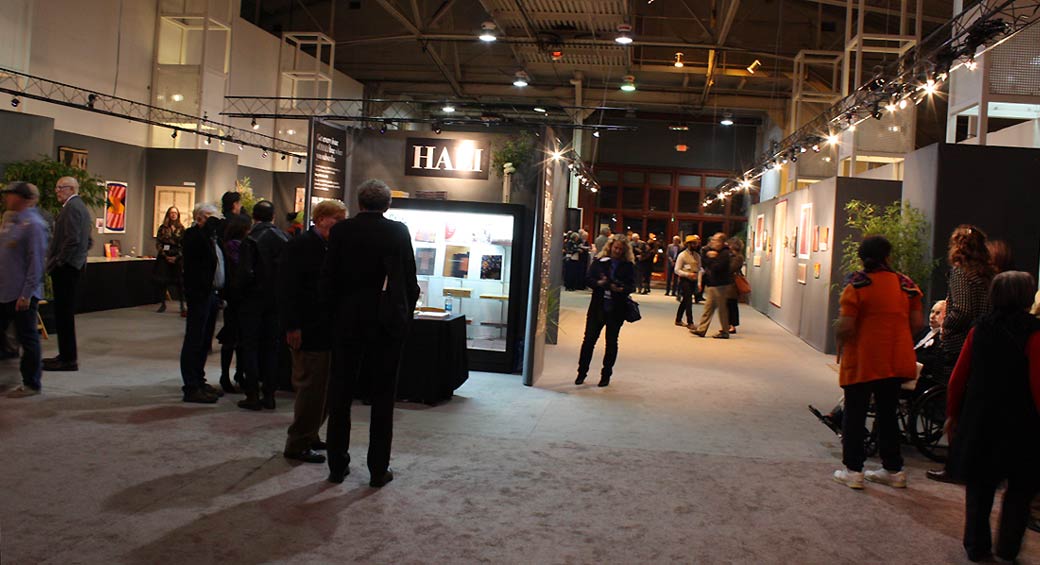
Fort Mason Festival Pavilion Opening Night
Dealers reported that the crowds, energy and enthusiasm shown opening night, dwindled during the remaining days however. General hopes were that buyers might be returning to “hard assets” like art, gold, real estate etc., since many had been hurt and disillusioned in the stock market. Show sales suggested otherwise.
As I’ve written before, the show has been in slow decline since 2008 and sadly that is still true today. More high quality dealers are leaving and not enough good ones are signing up. Robert Brundage told me it was his last year exhibiting. I’ve learned that Bruce Frank does not plan to return either. Bruce was one of the show’s best anchor dealers, so he and his art will be especially missed in that case.
“The Market” was the most common topic of discussion among dealers who were eagerly comparing notes and experiences. The conclusion, is that economic forces and polices have disemboweled the market. Your average middle class buyer is MIA. That hurts since it was the middle class “Art Lover” who often supported the dealers, but can no longer afford to buy. At this point it is no exaggeration to say that, we are not only in a “buyer’s market”, but an “extreme buyers” market– the likes of which I’ve never seen. One might assume there to be extreme buying opportunities also. One obvious contributing factor to weaker sales is the stronger dollar versus the euro and other currencies, making our goods less affordable and appealing.
The down cycle may be a normal facet of the market, but this time it has been long-lasting, and seems like the new reality. The sellers of Tribal Art vastly out number the buyers, leading to depressed prices, and some depressed dealers. The candid ones will tell you they are often talking losses on sales to make ends meet.
A Daily Mail Article to check out that relates to this topic of lower prices: “Have Art Prices Peaked? Auction Houses report falling profits as the value of even Picasso’s tumble” .
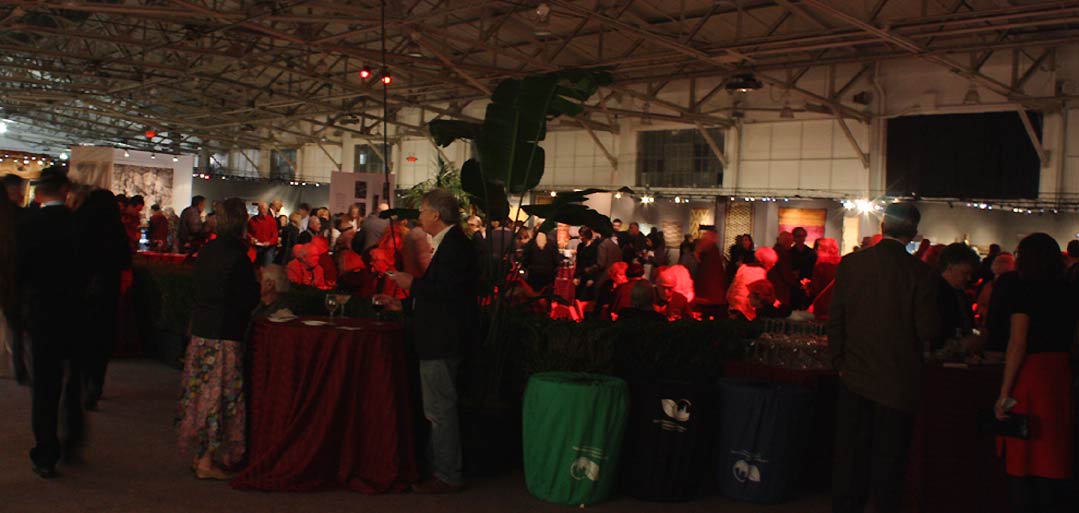
Opening night, taken while standing in the bar line.
It is difficult to talk about the show without flashing back to better days. It was not that long ago that competition among buyers was fierce. I’m talking when the doors opened, the booths looked like anthills of customers and things would sell and vanish in a heartbeat! That was especially true at the Santa Fe Ethnographic shows. Often, if a customer hesitated on a piece or walked away for an instant, another alert customer behind him would snap it up immediately! At Fort Mason, deals were constantly made and cut right in parking lots. It doesn’t feel like any of us will see a repeat of those good-old-days. Right now, economic forces have created fierce competition for “customers”. So, we are stuck operating in the market we have, rather than the one we want.
Another theme so often talked about among soul-searching dealers is how to attract “new customers” into the business and from where and how the next resurgence of interest will emerge?? Historically we’ve seen periods of broad swelling interest in Tribal Art when the public got on board with collecting (the 1950s, the 70s, the 90’s and up to 2008). With the world and it’s economy in upheaval, and terrorist activity increasing, it may become unsafe to even land at an airport, or take the subway to get to future shows…
There has been a MASSIVE demographic shift away from cultural artifacts. In past decades Tribal Art was eagerly collected, studied, and used for decor. It was a popular trend for years. Now it seems the “Millennial Generation” or (generation Y- ages 15-35 I guess) don’t give a flip about it and if they do they can’t afford it since many are still living in their parent’s basements. The time to be a collector was in the 1960’s-80’s when a volume of GREAT art was available. Fast forward to now, the supply of high quality great things (masterpieces) is scarce and the prices outrageous. That’s an impossible combination for getting a new generation interested and on board.
The millennial generation grew up on video games and social media, not learning about art and or cultural artifacts. Fortunately, the outlook is a little better in Europe since knowledge and passion is still effectively transmitted to the next generation. A next resurgence of interest can’t be forced but must happen on its own. Much of America is so superficial that it would take a major pop star to start collecting, instagramming and tweeting about Oceanic and African Art to make it “cool”. The lemmings would follow and create the trend, but surely a low probability of happening.

Colorful festive Belly Dancers whirling and agitated hips and coin jewelry to tribal music.

The Belly Dancers in Middle Eastern tribal attire
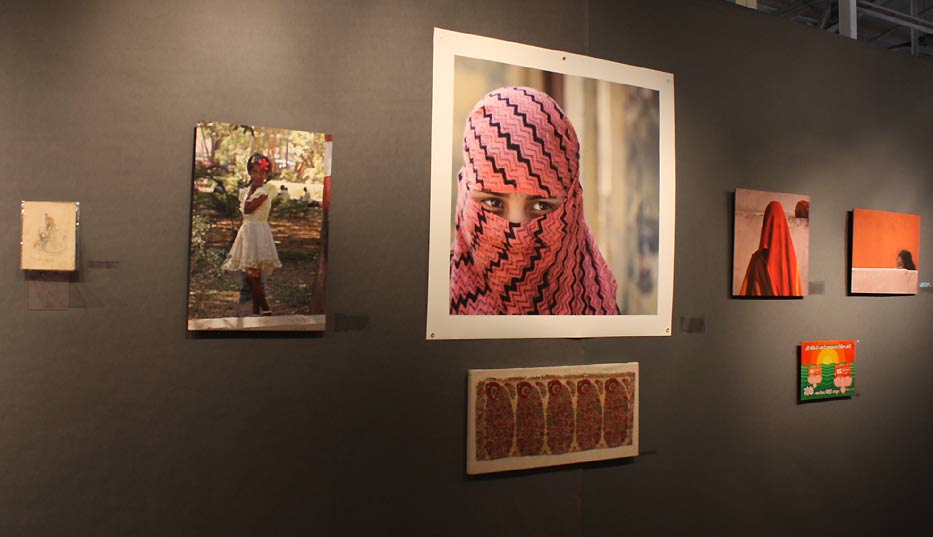
Part of an India Exhibition in the Foyer.
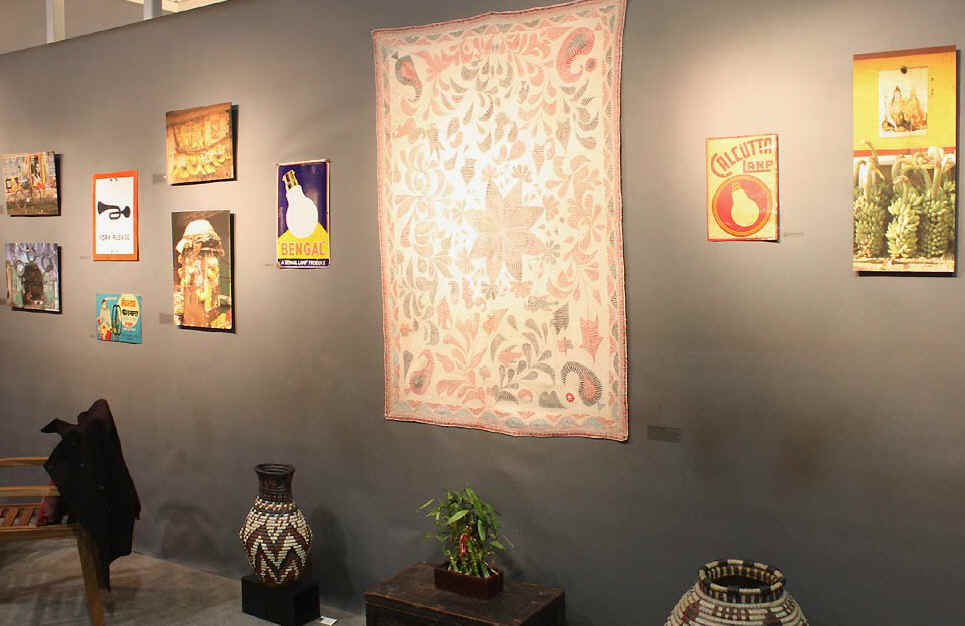
India Exhibition cont. Kind of ho-hum for me.
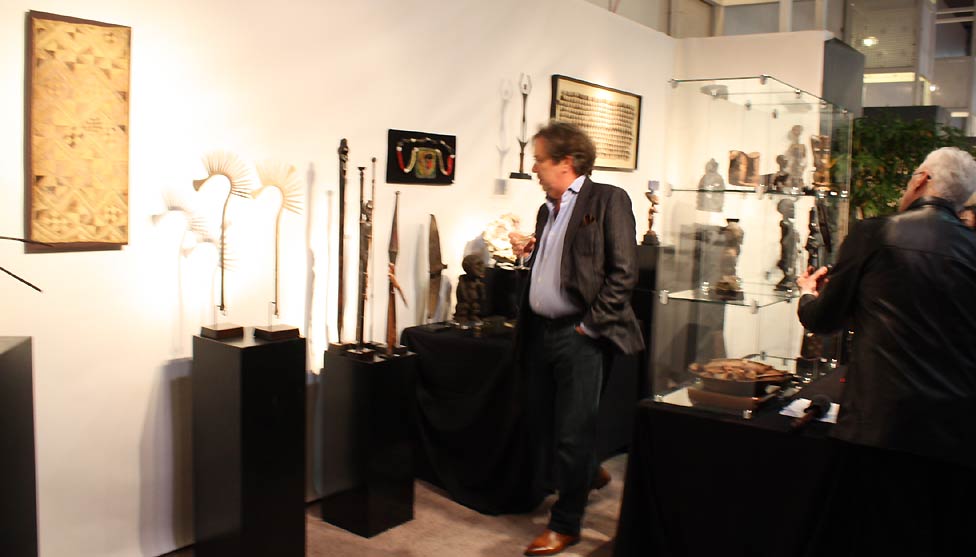
Peter Boyd has the first retail booth at the show entrance. That’s collector Michele Grandsard from Antwerp who always attends.
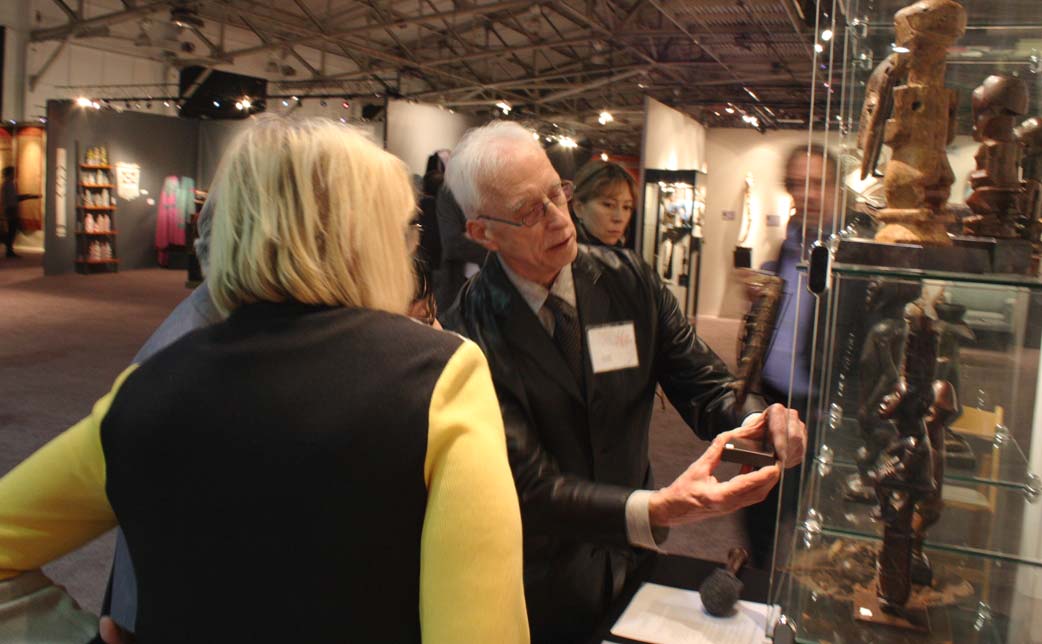
Peter Boyd with customers
Hamson
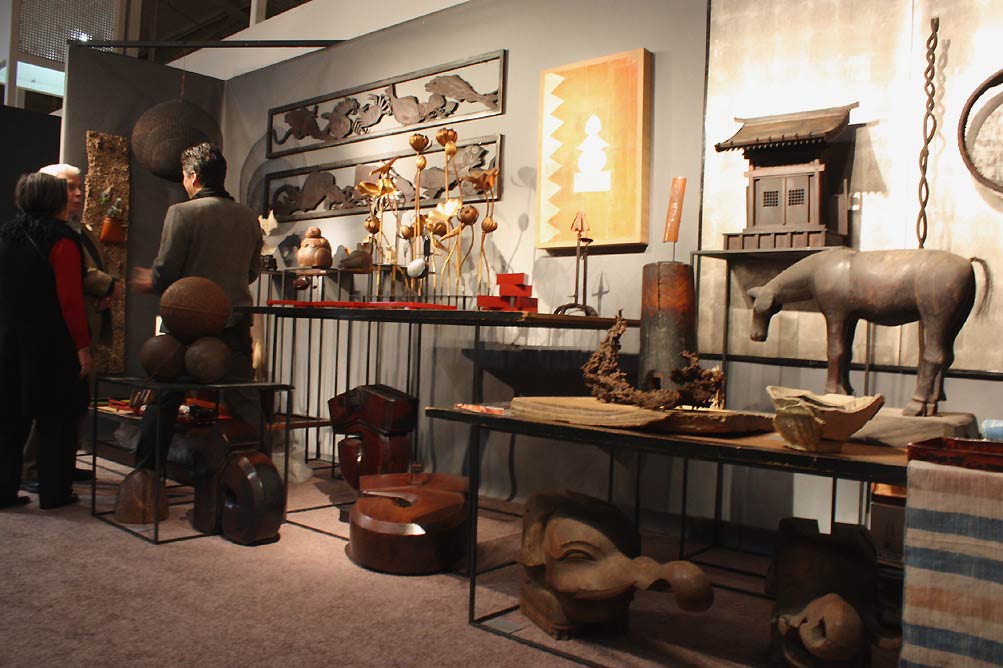
Galen Lowe with another fabulous display of Japanese Antiques.
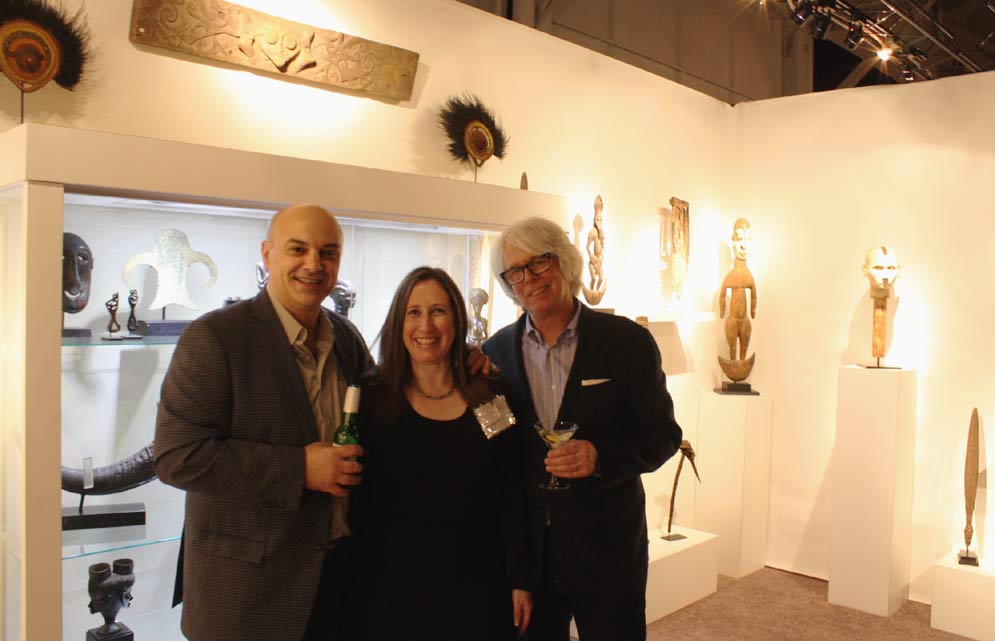
(Opening night- harsh lighting) Mark Assayag, his wife and Robert Ross (right). Mark’s booth was right off the food court and bar making it busy all night long.
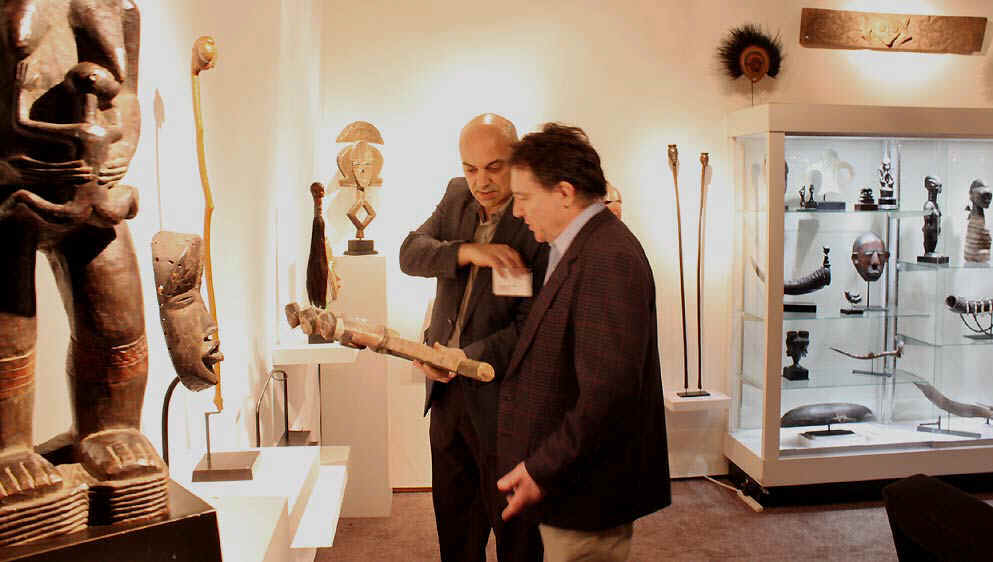
Mark Assayag showing a piece to Daniel Rootenberg (right)
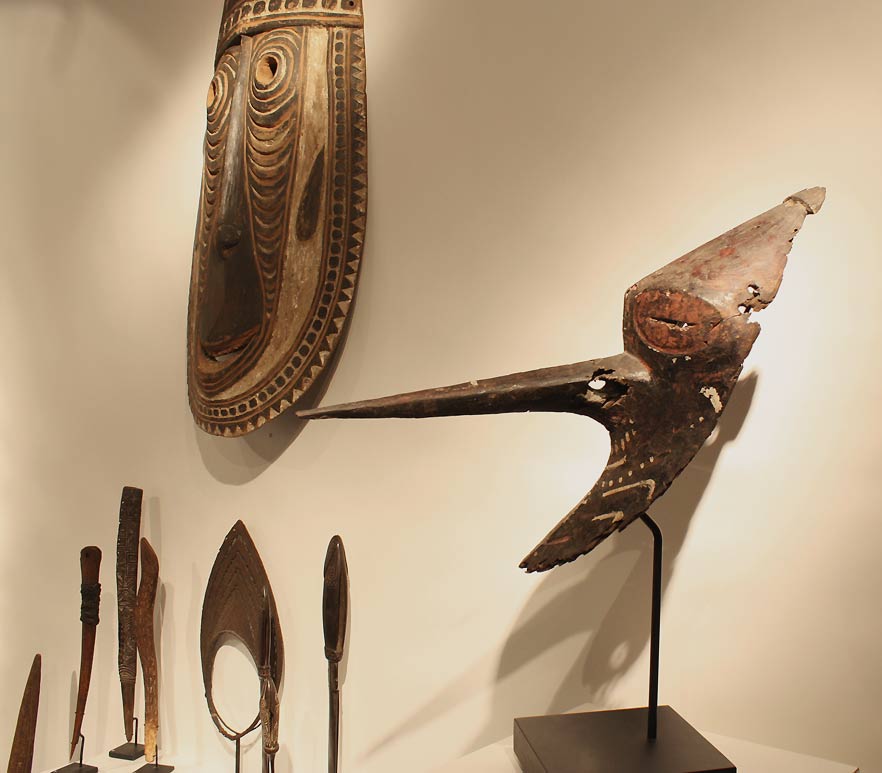
(Mark Assayag) New Guinea Turubu Barak mosquito mask.
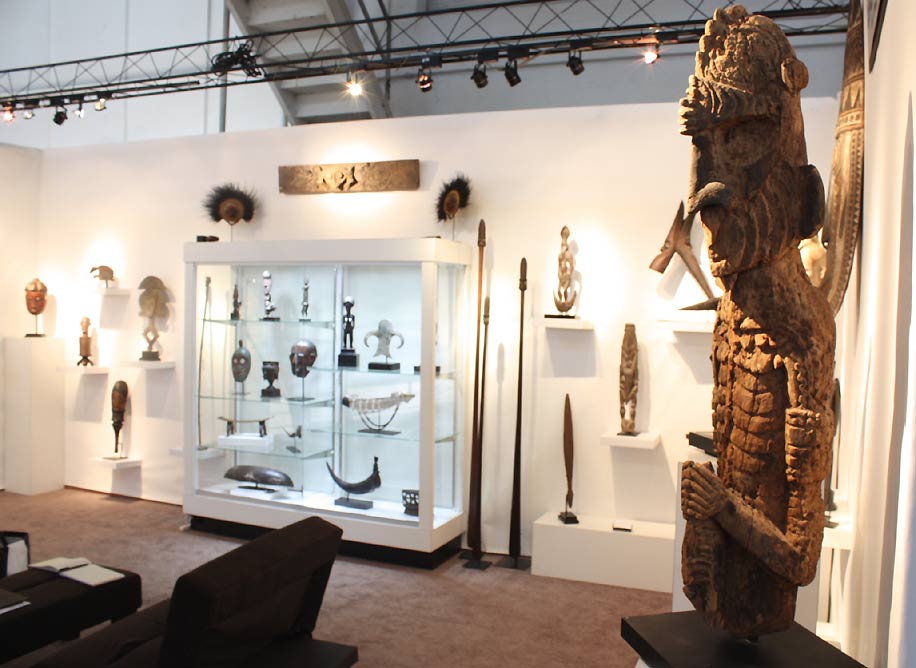
(Mark Assayag) This is Mark’s second year at the show and it was exciting to see his pieces. He brought a sampling of the New Guinea Art from John Friede’s collection he purchased. In a shrewd move, he was able to purchase the balance of Friede’s collection and called “checkmate”, shutting out others who used it as a “honey hole” for so long.
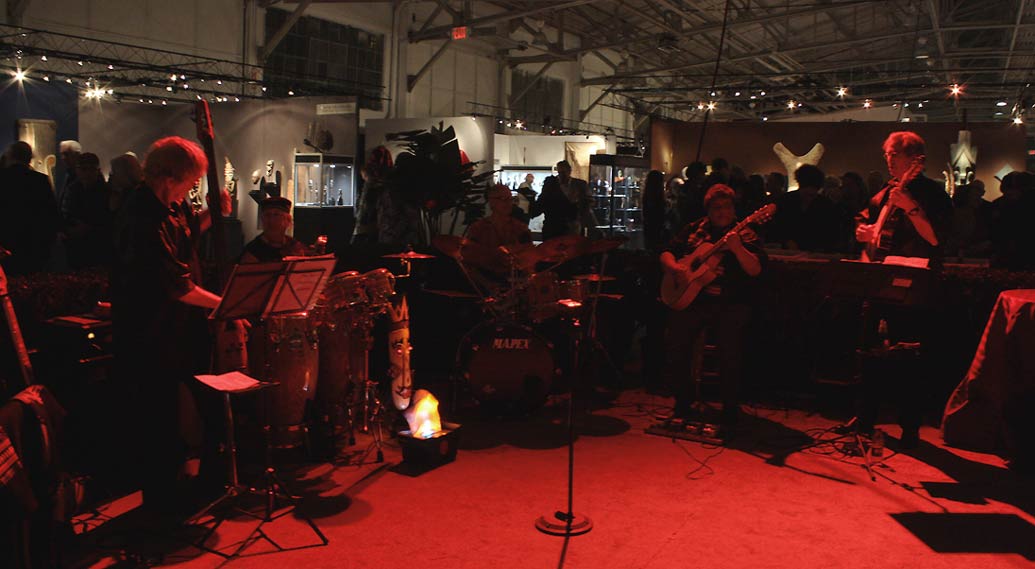
Live band
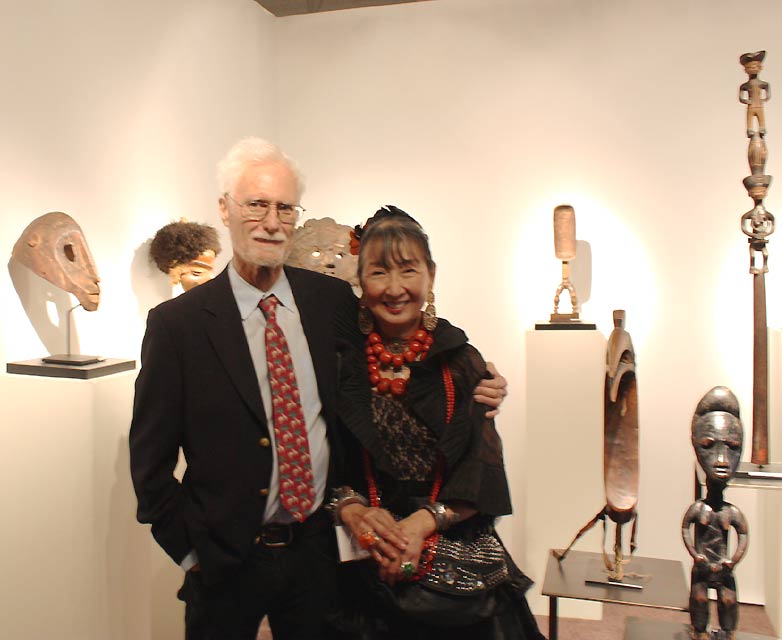
Jim and Lin Willis
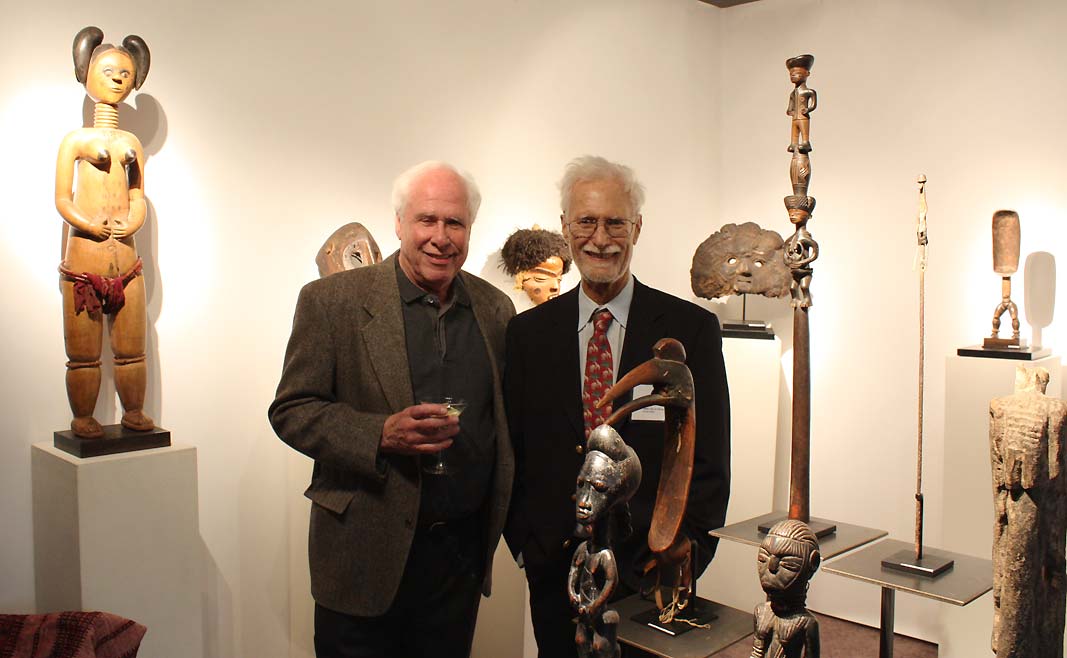
Jerry Solomon (left) and Jim Willis. I remember when I interviewed Jim, he told me that you really never retire from this business. He surely practices that philosophy, selling and turning over more inventory than most of us!
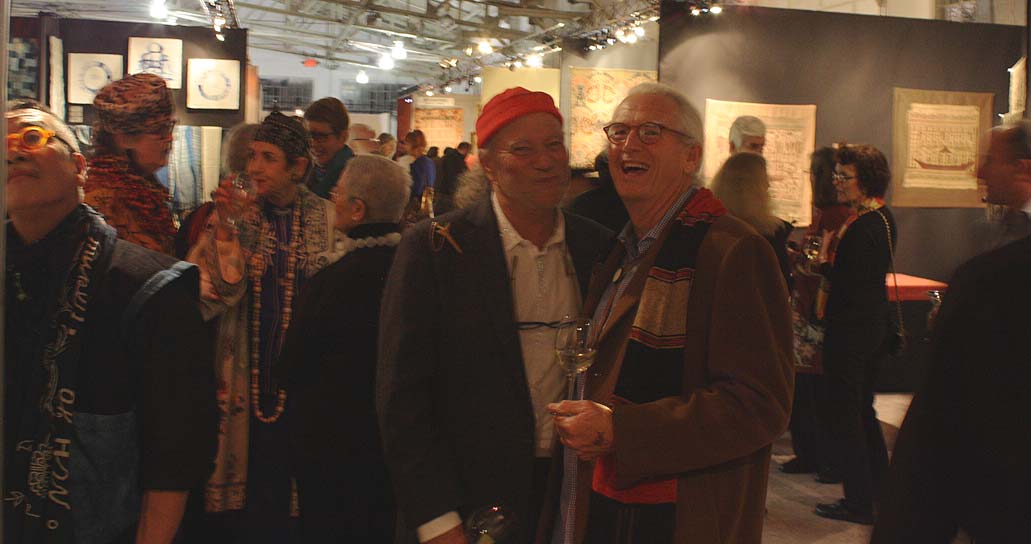
(opening night crowd) Gregory Ghent and collector Jeffrey Clifton (right).
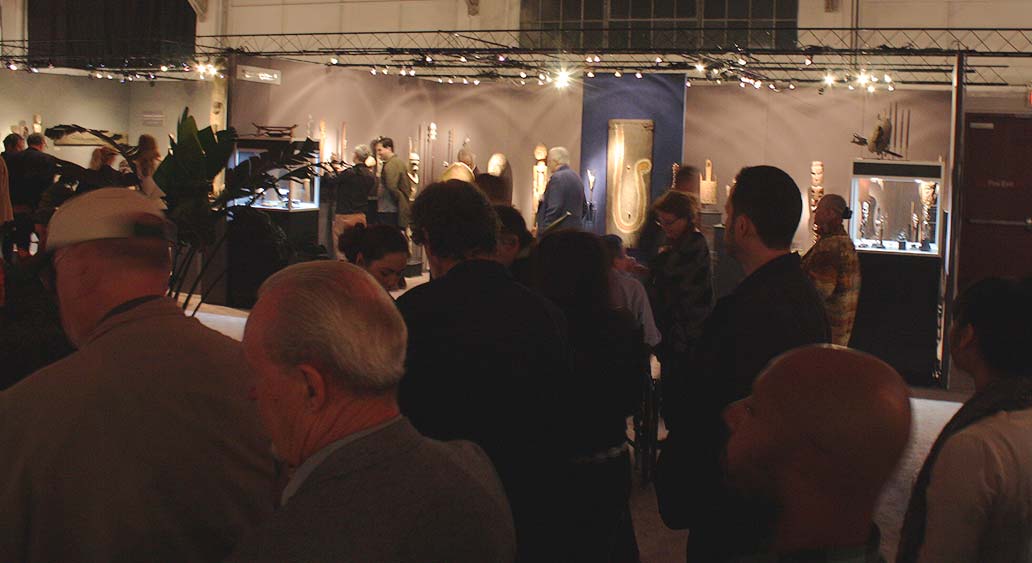
The lines for the two bars backed up into dealer’s booths, encroaching on their space.
While waiting in line, a seasoned collector told me “the show has a handful of good dealers who consume most of the oxygen in the room and then there is everything else”. While that statement is overall unfair and not quite accurate, it is a belief held by many, especially the old guard of collectors.

(Tad & Sandy Dale’s booth) Ted Trotta and Anna Bono visiting.
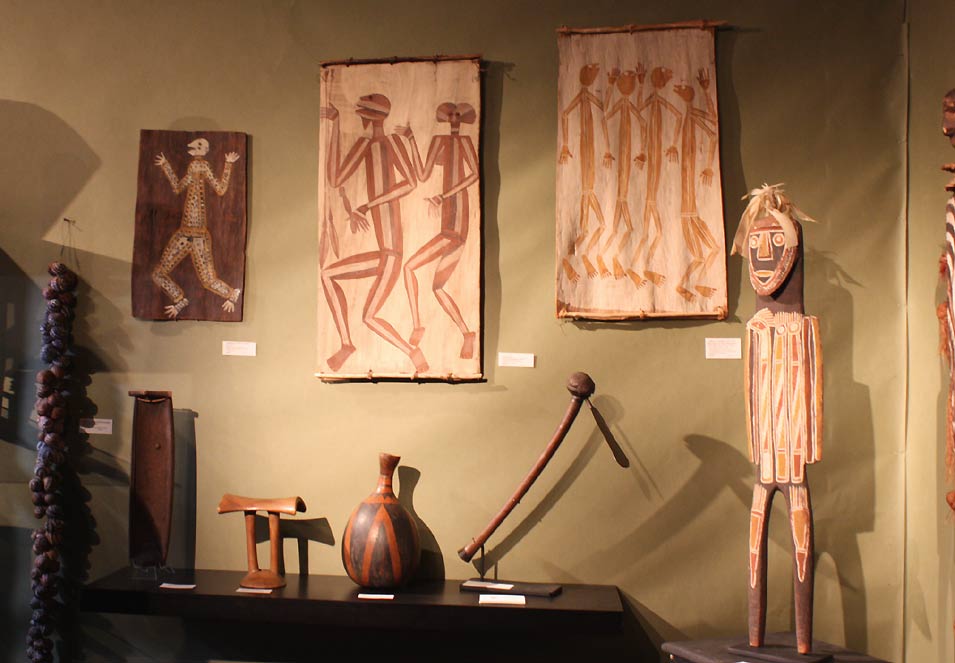
(Tad & Sandy Dale)
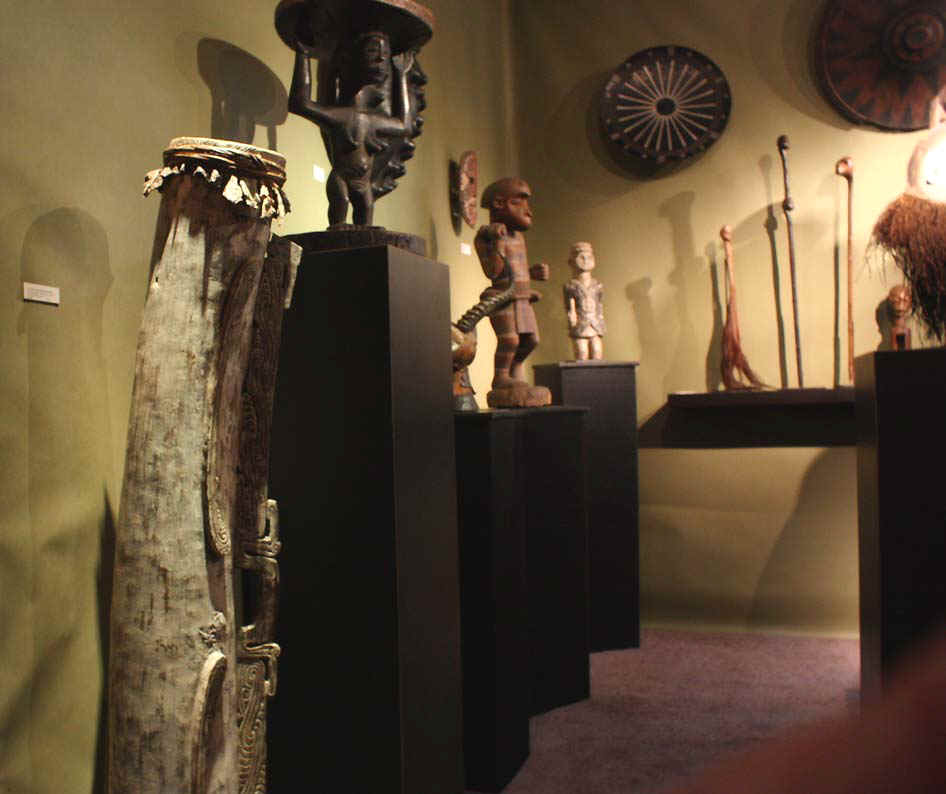
(Tad & Sandy Dale) A poor photo- but I was struck by the scale and detail of Trobriand Island drum (far left) with applied lime paint.
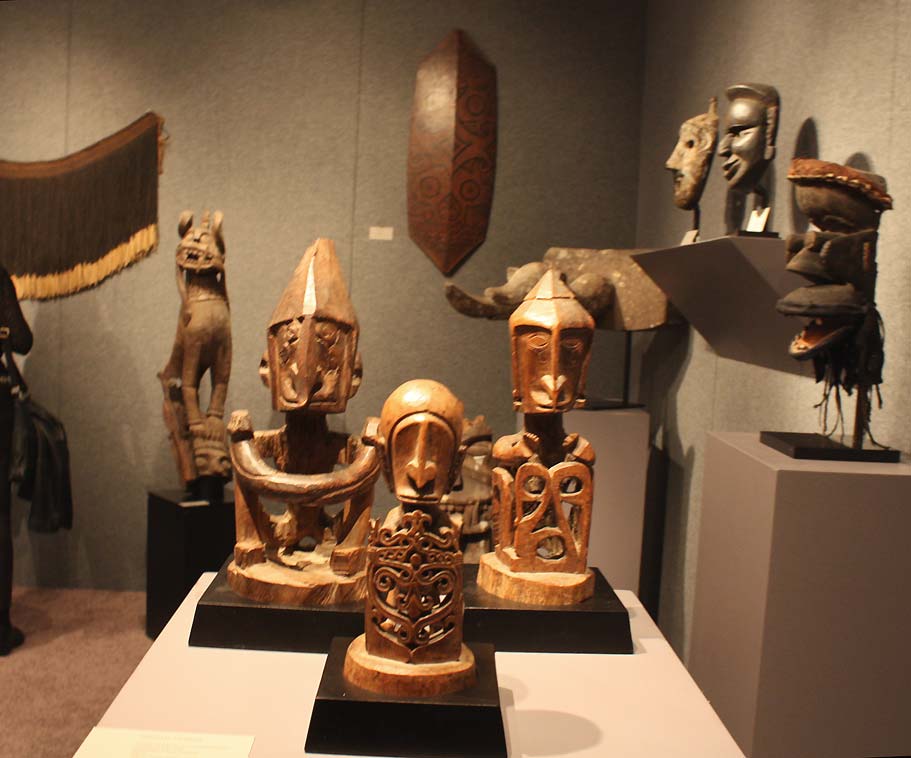
(Thomas Murray) Outstanding trio of Korwar figures.
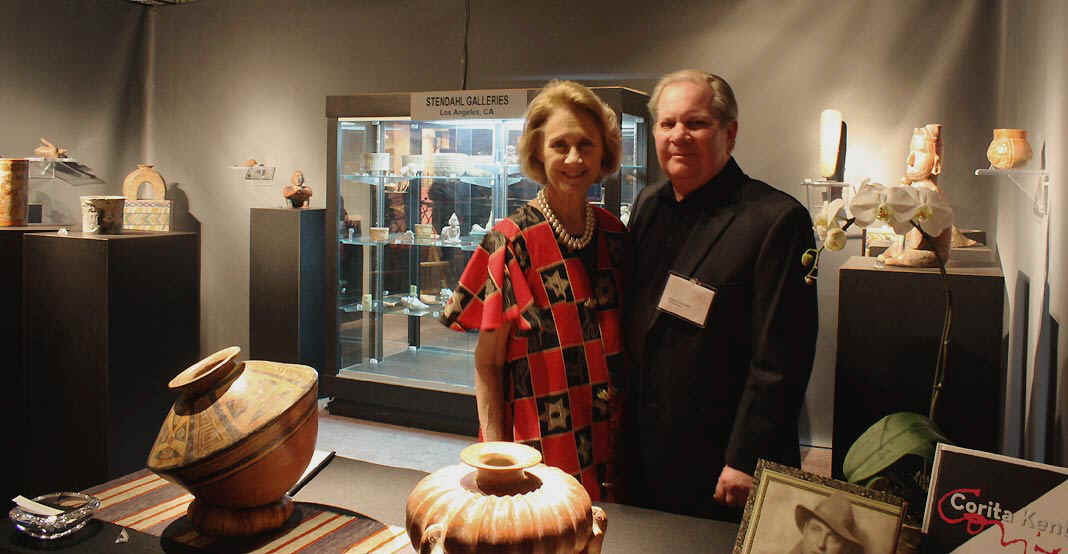
(Stendahl Galleries) Ron and April Dammann
(Chris Boylan- Sydney) A bold colorful display. One of the most visible booths in the show right off the food court. In past years it was occupied by Marcuson & Hall.
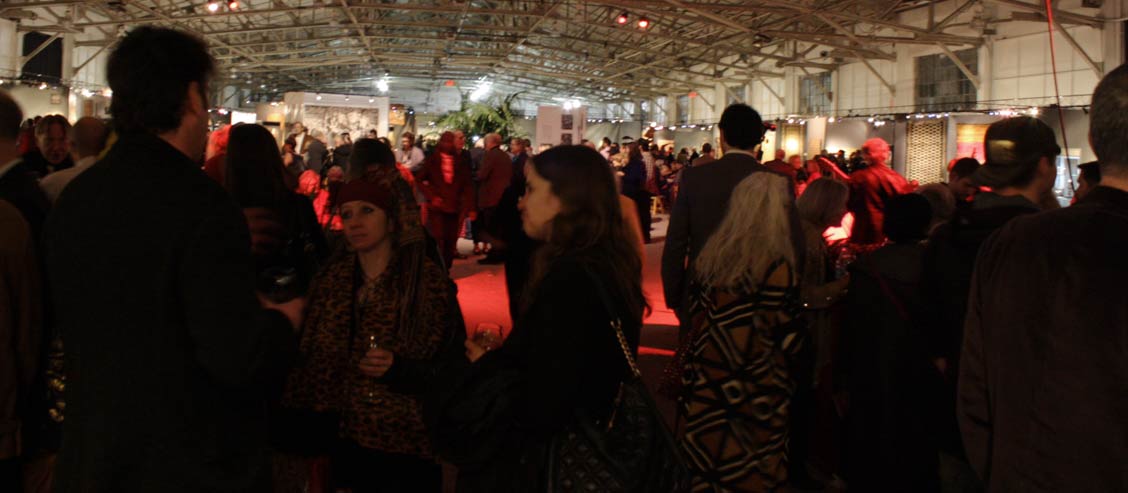
(Opening night) still standing in the bar line, wondering if this would be a good week to stop drinking…. NO.
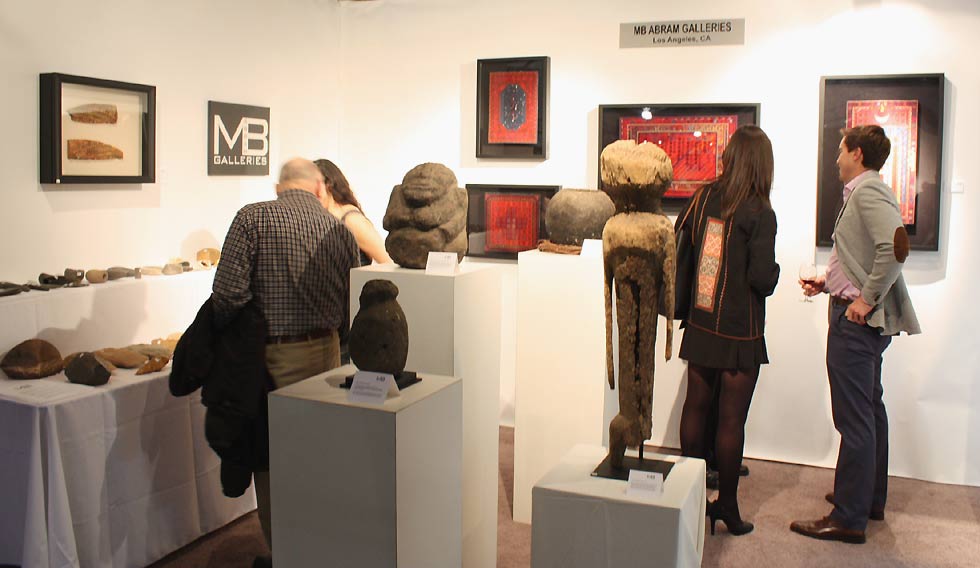
(MB Abram Galleries) We’ll see more of.
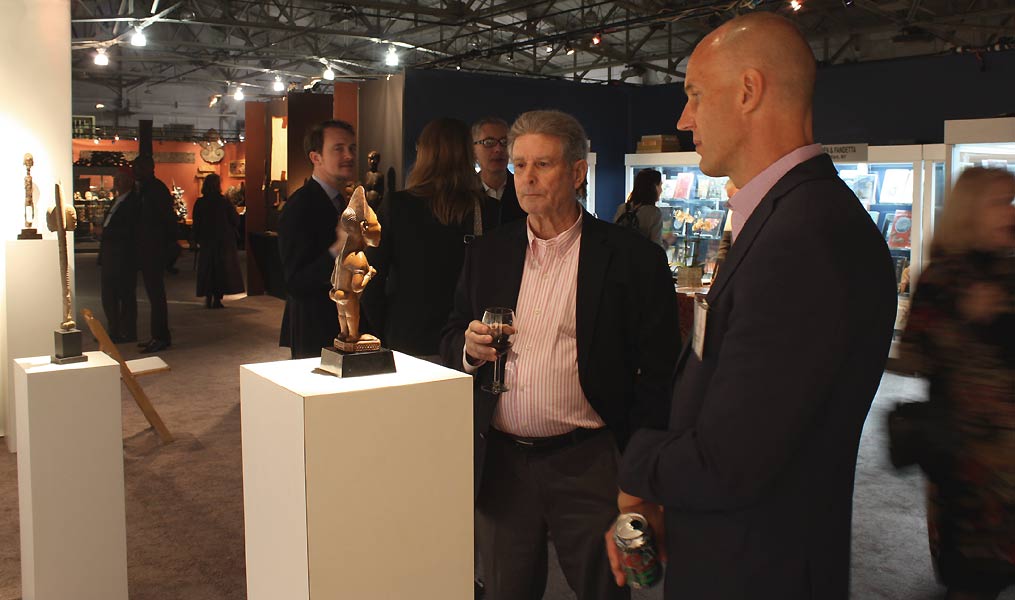
(James Stephenson African Art) With a collector considering a Yombe female figure.
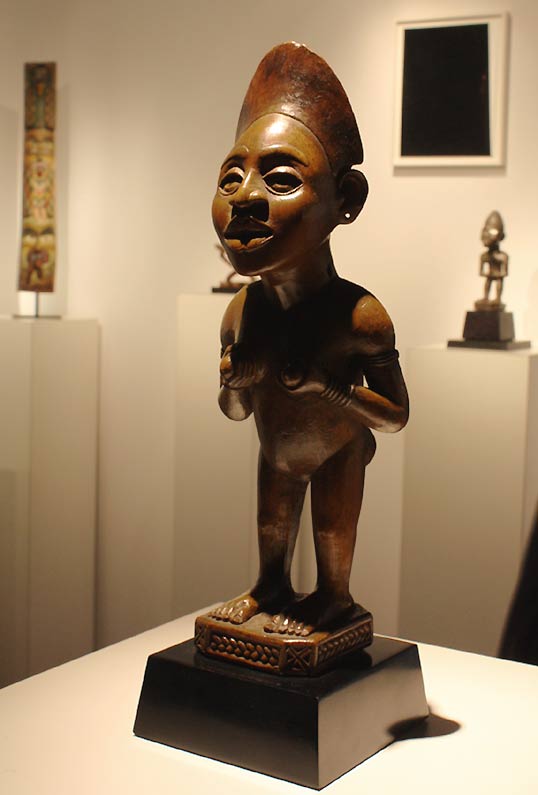
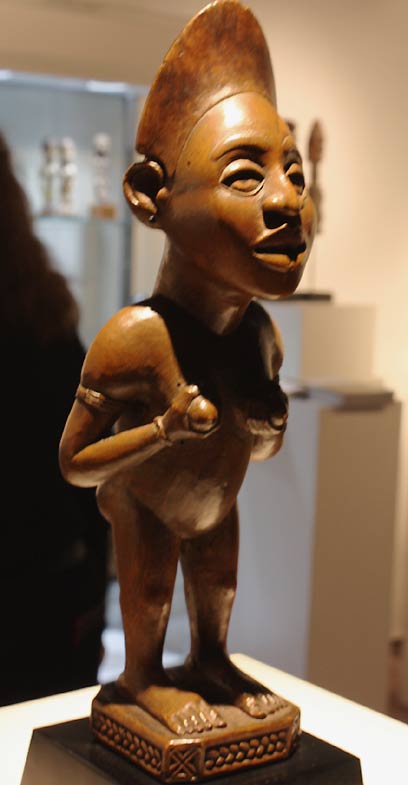
(James Stephenson African Art) This Yombe female was his catalog piece.
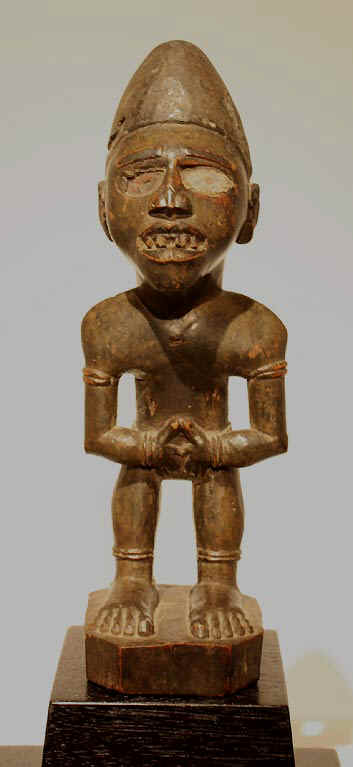
(James Stephenson African Art) A tense Congo Power figure also. I believe he sold both of these at the show. He had another cool Yombe figure with arm in the air but the photo didn’t come out…
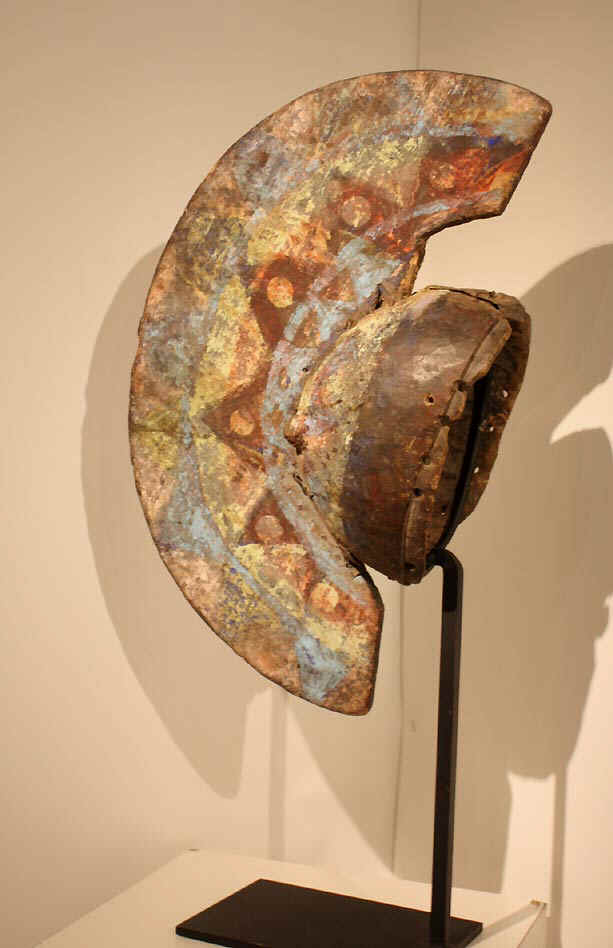
(James Stephenson African Art) This Mossi mask with bold layered old paint was an Ironsmith’s Shirine Mask, according to Michael Oliver.

(Wayne Heathcote)
My assigned photography grade is a low D+. Lots of different lighting conditions and I didn’t want to use a flash. Most photos were on the fly and on the move while being interrupted and distracted. I kept this one since you see a full view of their booth.
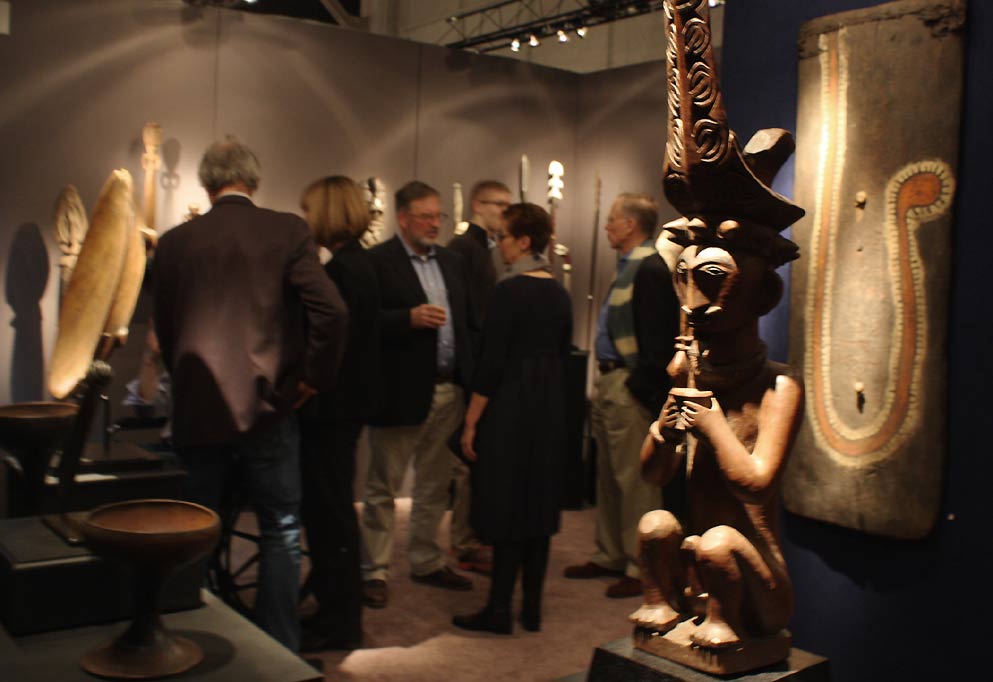
(Wayne Heathcote) Lots of great objects here. Nias Island royal seated ancestor figure “Adu Zatua”.
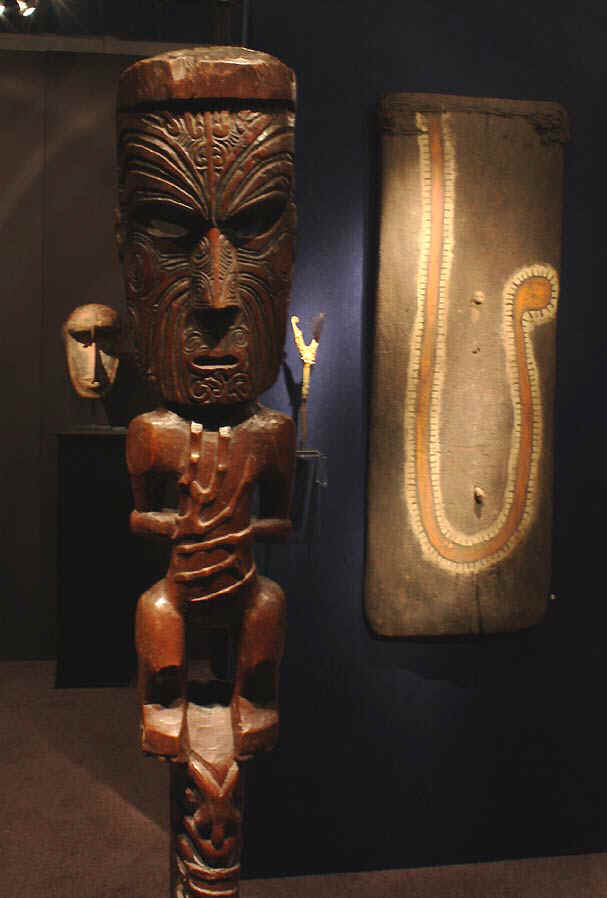
(Wayne Heathcote) Important published Maori figure with auction history. A graphic painted New Guinea Highlands shield with Centipede.
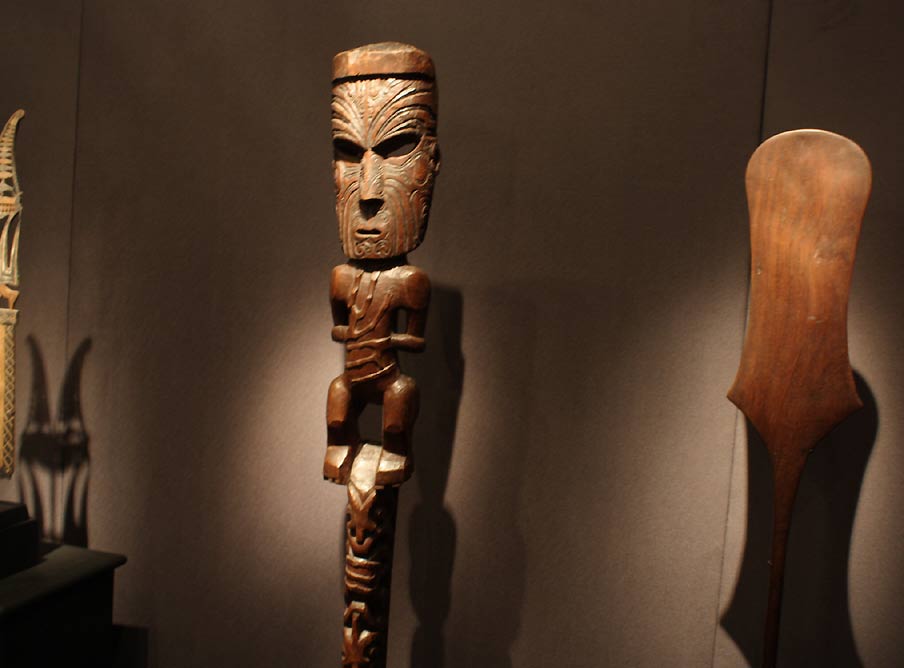
(Wayne Heathcote) Another view
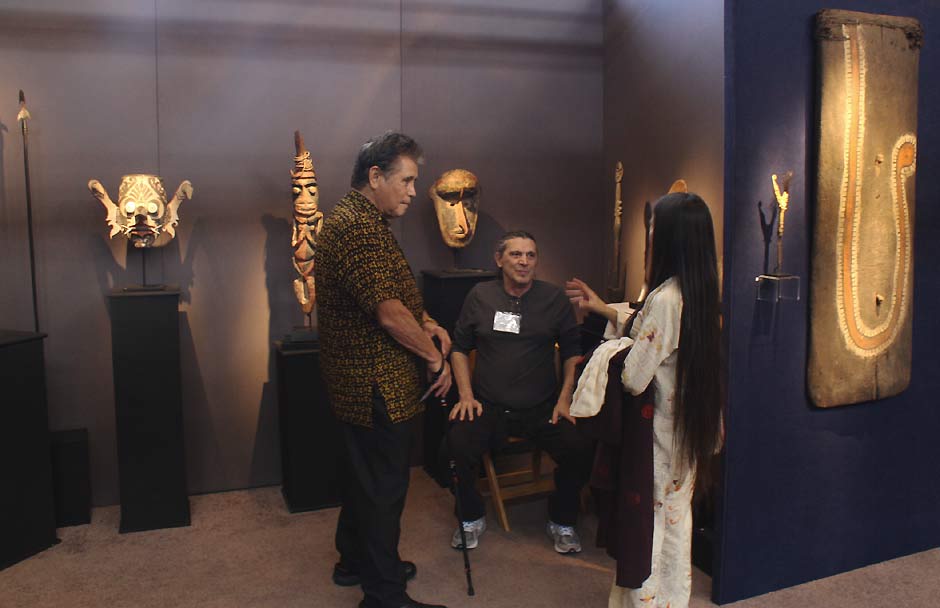
(Wayne Heathcote’s Booth) Jack Sadovnick talking with visitors. We were pleased to see him back and recovered from health issues.
(Wayne Heathcote)
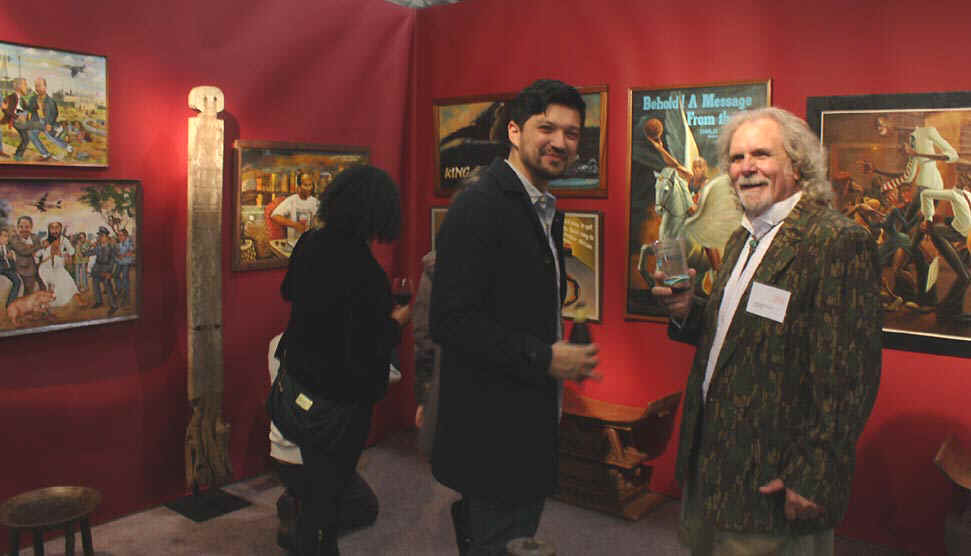
(Ernie Wolf- Los Angeles) who we will be visiting again later.
Regarding the “context” of this review, it is not done for myself or the dealers, but rater for the thousands of people who couldn’t attend the show but who expect nothing less than the unvarnished truth as I see it. The folks in my audience expect honest reporting and not a flowered version of the market or events.
(Promoter Liz Lees) It is true that Liz sold the show to Kim Martindale and will be enjoying retirement. We wish her the best.
We now know that the best thing for the health of the show during and after the 2008 recession was to “lower” exhibition fees, not raise them. Having some foresight would have meant keeping more quality dealers onboard for much longer. If a dealer has a bad or bust show and traveled from overseas to do so, they may not return again. However, if it didn’t cost quite as much, they might stay onboard. Attendance seemed to follow along with many of those dealers who left.
Joe Loux- San Francisco. Joe has been doing the show for 10 years and is always upping his game. In previous years this space was occupied by John Giltsoff and Kevin Conru.
(Joe Loux) Detail of the back side of a rare Shield from the Garo tribal region of N.E. India (far left in booth)
(Joe Loux) Early Upper Sepik Shield
(Joe Loux)
(Joe Loux) This Middle Sepik suspension hook was his catalog piece.
(Joe Loux) Indonesian Talaud Island shield. Only handful are known.
The crowd was modest to thin in the coming days and not many new faces. Occasionally, you’ll see the old guard of collectors roam through, but they seldom buy since their collections were formed when the best material was available…. and they too often remind us of it.
Alain Naoum- Brussels. Alain is one of the few European dealers, like Patrick Mestdagh and Joris Visser, who have been exhibiting for 15 years or more.
(Alain Naoum) Nigerian Figure (Chamba/ Koro maybe?)
Miranda Crimp
(Jo De Buck-Brussels) Next to an African Baga figure. Jo told me he is working with Origins Auction as an expert. Makes perfect sense as auction is where the buyers are.
(Jo De Buck-Brussels) Note, some of these miniatures may also belong to DeRoche since the exhibit space is shared.
(Andres Moraga) That oval object with triangle patterns is not a shield but rather a Tutsi harp from Rawanda.
(Andres Moraga) Looks like an embroidered silk and cotton Nupe royal robe.
Primary Source (John Strusinski) Among the boldest personas in the business, with a sensitive refined eye for design.
Primary Source (John Strusinski)- This lacquer and gilt object drew me in for its amazing carving and sculptural qualities. I didn’t have time to discuss it with him, but likely an architectural temple ornament.
(Farrow Fine Art) Erik also had a Garo shield of the style that Joe Loux had (far right).
(Farrow Fine Art) Erik with local customer.
(Tambaran Gallery- NY) Joining the mix this year for the first time. Maureen was in Australia but we enjoyed seeing her pieces. Hopefully some sold so she’ll return.
(Tambaran Gallery) Borneo Kalimantan Dayak ceremonial mat.
(Tambaran Gallery) New Guinea Papuan Gulf figure and a Northwest Coast Tlingit raven rattle.
(Tambaran Gallery) A fine Maori Whalebone wahaika club and other treasures in the showcase.
(Tambaran Gallery) They brought some strong Polynesian pieces including the Maori feather box. Nice mother of pearl inlaid spoon but uncertain on the culture (Asian/ Micronesian)?
(Tambaran Gallery) Catalog submission piece and also the cover of the show catalog. Tlingit Shaman of a witch with bound arms (Ex. George Terasaki).
Galerie RB (Roger Bourahimou- Belgium) I believe his first time exhibiting in San Francisco. Chi wara headdress.
(Amayas Naegele) His masks struck me. A well used Bamileke night society Hungan mask from Cameroon (a pretty example) and a Sogo Bo puppet bird head from the Boze, Segou area of Mali (left). How Northwest Coast does this example look? Wow!
(Art of Eternity- Howard Nowes) Congo Yombe mask
(Sebastian Fernandez) Hemba figure from Paolo Morigi’s collection.
(MB Abram Galleries- Los Angeles) I was thrilled to see an old friend join the show this year.
(MB Abram Galleries) An impressive Polynesian Easter Island (Rapa Iti) stone goddess figure collected in 1917. (Right) Large early steatite stone cooking bowl, with perfect symmetry, from the California Chumash Indians.
(MB Abram Galleries) A selection of ancient stone tools from various early cultures and first humans (some of whom I thought I saw in the crowd wandering around).
(MB Abram Galleries) A figural iron Dayak Blowgun tip from Borneo.
(MB Abram Galleries) Morris and I. We go way back and have inspired each other along the journey of dealing art. Displayed on the wall is a collection of special needlepoint works from artist Jan Haag (Seattle).
Robert Brundage- Art from the Himalayas. After exhibiting for 20+ years, Bob tells me this was his last one. He and is art will be missed.
Robert Brundage- Nepalese figural oil lamp.
(Robert Brundage)
Asian art dealers from London (C.G. Knapton Ltd & Brandt Asian Art) Not long ago the promoters “combined” their separate Asian Art show, normally occurring the prior week, with the Tribal show.
A surprising catalog photo with Cole Harrell and Hillary Clinton. Do you think he had to pay her usual $250k lecture fee for advertising? hmmm….
(Cole Harrell- NY) brought some strong African pieces.
(Cole Harrell- NY) Expressive kneeling Congo figure.
Art of the South Seas- Greg Hamson
(Art of the South Seas- Greg Hamson) Showcase of various miniature New Guinea figures.
Unfortunately, the rest of the review is lost.
